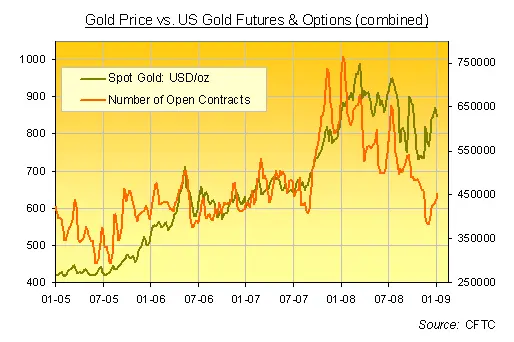Gold is a time-honored investment and is often seen as a safe haven asset during times of economic uncertainty. Whether you are an experienced investor or new to trading, understanding how gold trading works can help you make informed decisions. This guide explores the different methods of trading gold, their benefits, and risks, so you can better navigate the gold market and choose the best approach for your portfolio.
Why Invest in Gold? Understanding the Appeal of Gold Trading
Gold has always been a reliable store of value, especially during times of financial instability. Over the years, its price has surged during recessions, geopolitical crises, and inflationary periods. Whether as a hedge against inflation or a way to preserve wealth during economic downturns, gold trading provides investors with a way to safeguard their money.
Benefits of Gold as an Investment:
- Hedge against Inflation: Gold tends to rise in value when inflation decreases the purchasing power of paper currencies.
- Safe Haven Asset: During times of geopolitical instability or market volatility, gold prices often increase as investors seek safe assets.
- Diversification: Adding gold to your investment portfolio can help reduce overall risk, especially when other assets like stocks or bonds are underperforming.
Different Ways to Invest in Gold: A Breakdown of Key Methods
There are several methods of gold trading, each offering different levels of risk, accessibility, and convenience. Let’s explore the main ways investors engage with gold markets.
Buying Physical Gold: Bullion, Coins, and Jewelry
One of the most straightforward ways to invest in gold is by purchasing physical gold. Investors can buy gold in the form of bullion (bars or coins), jewelry, or collectibles.
Types of Physical Gold Investments:
- Gold Bullion: This is the most direct form of investment. Bullion includes gold bars and coins, which are usually sold at a premium above the spot price of gold. Gold bars come in a range of sizes, from small 1-ounce pieces to larger 1-kilogram bars. Bullion coins, such as the American Gold Eagle, are also widely popular.
- Gold Jewelry: While investing in gold jewelry can be appealing, it often includes a significant markup due to craftsmanship and design. Gold jewelry can be a less efficient form of investment when compared to bullion.
- Gold Coins: Collectible coins like the American Gold Eagle or Canadian Maple Leaf are bought both for investment and as a collectible item. However, these can carry additional premiums depending on rarity and condition.
Storage and Security Concerns:
When you invest in physical gold, you must also consider secure storage options. Gold is often stored in safe deposit boxes at banks or in private vaults. If you choose to store your gold at home, be sure to use a safe and take appropriate security measures.
Gold ETFs: A Liquid, Low-Cost Alternative

For investors who prefer not to own physical gold, gold ETFs (Exchange-Traded Funds) provide an excellent alternative. These funds are designed to track the price of gold, allowing investors to gain exposure to gold without the need to store the metal.
What is a Gold ETF?
A gold ETF is a type of fund that holds physical gold or futures contracts. The most popular gold ETF is the SPDR Gold Shares (GLD), which seeks to track the price of gold bullion. Gold ETFs offer liquidity and are easy to trade on major stock exchanges.
Benefits of Gold ETFs:
- Liquidity: You can easily buy and sell shares in a gold ETF on stock exchanges.
- No Storage Costs: Unlike physical gold, you don’t need to worry about storing or insuring the gold.
- Low Fees: Most gold ETFs charge low annual management fees (typically around 0.4% per year), making them an affordable option for investors.
Investing in Gold Mining Stocks and ETFs
Another way to gain exposure to gold is through gold mining companies. These companies extract gold from the earth and, in turn, their stock prices are tied to the price of gold.
Gold Mining Stocks: Risk and Reward
Investing in gold mining stocks allows you to profit from gold price movements while also benefiting from the operational growth of the company. Gold miners can often outperform gold itself when gold prices are high, but they also come with additional risks like management issues, regulatory challenges, and labor strikes.
Popular gold mining companies include Newmont Corporation, Barrick Gold, and AngloGold Ashanti. Before investing, research the company’s fundamentals, operations, and how well it is positioned within the industry.
Gold Mining ETFs: Diversifying Within the Sector
Gold mining ETFs offer diversification by investing in a basket of mining companies. These ETFs, such as the VanEck Vectors Gold Miners ETF (GDX), reduce the risk of relying on the performance of one company. If you want to invest in gold miners but prefer less individual stock risk, mining ETFs are a great option.
Trading Gold Futures: Advanced Gold Trading Strategies

For experienced investors, gold futures contracts offer a way to speculate on gold prices without owning the asset. A futures contract is an agreement to buy or sell gold at a set price on a specific date in the future.
How Gold Futures Work
Gold futures are traded on exchanges like the Chicago Mercantile Exchange (CME). Each standard contract represents 100 troy ounces of gold. Futures allow investors to leverage their position, meaning you can control a larger amount of gold with a relatively small margin.
Pros and Cons of Gold Futures:
- Pros: High leverage, potential for large returns, ability to short gold.
- Cons: High risk, margin calls, complex for beginners, and potential for large losses.
Trading Gold CFDs: A More Accessible Option for Retail Traders
Gold CFDs (Contracts for Difference) are a great way for retail traders to speculate on the price movement of gold without owning the asset. CFDs allow investors to trade the price of gold with lower capital outlay compared to futures.
How Gold CFDs Work
When you trade gold CFDs, you are entering into a contract to exchange the difference in price between the opening and closing of the contract. This type of contract does not involve owning the underlying asset, and you can trade gold with relatively small amounts of capital.
Benefits and Risks of Trading Gold CFDs:
- Benefits: No need to own physical gold, low initial investment, ability to profit from both rising and falling gold prices.
- Risks: Leverage can amplify losses, market volatility, and the cost of holding positions overnight.
Risks of Gold Trading: What You Need to Know
While gold trading can be highly rewarding, it is not without its risks. The price of gold is influenced by a wide range of factors, including interest rates, geopolitical events, and market sentiment. Here are some risks to consider before entering the gold market:
- Price Volatility: Gold prices can fluctuate in the short term, making it a risky investment for those with a low tolerance for volatility.
- Leverage Risks: If you trade gold futures or CFDs, be mindful of leverage. While leverage can amplify profits, it can also result in significant losses.
- Storage and Security: When investing in physical gold, you must account for secure storage and insurance costs.
How to Choose the Right Gold Investment Strategy
Choosing the right gold trading strategy depends on your investment goals, risk tolerance, and time horizon. If you’re looking for long-term wealth preservation, buying physical gold may be the best option. For those who want liquidity and lower risk, gold ETFs may be more appropriate. On the other hand, if you’re a seasoned trader looking for short-term gains, futures or CFDs could be the way to go.
Key Questions to Ask Yourself:
- What is my risk tolerance?
- Do I want to own physical gold or simply speculate on its price?
- How much capital do I want to commit to gold trading?
By answering these questions, you can determine which method of gold trading aligns best with your financial objectives.
Conclusion: Is Gold Trading Right for You?
Gold trading offers a wide range of opportunities for investors looking to protect their wealth or profit from gold price fluctuations. Whether you choose to buy physical gold, invest in gold ETFs, trade futures or CFDs, or purchase mining stocks, there are many ways to gain exposure to gold.
As with any investment, it’s crucial to do your research, understand the risks, and choose a strategy that suits your financial goals. Gold can be an excellent addition to a diversified investment portfolio, but it’s important to approach gold trading with a clear plan in mind.
Click here to read our latest article Does the Country You Live in Impacts Forex Trading?
This post is originally published on EDGE-FOREX.

